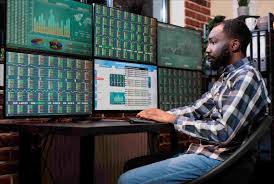Proprietary trading, commonly known as prop trading, has undergone a remarkable transformation over the years. Prop trading, where financial institutions or individuals trade stocks, bonds, derivatives, or other instruments using their own capital to generate profits, has become a significant driver in the financial world. This blog explores the changes in the prop trading landscape, emerging trends, and what lies ahead for this dynamic sector.
A Shift to Technological Advances
The evolution of prop trading is heavily intertwined with advancements in technology. Gone are the days when traders relied solely on gut feeling or manual analysis. Today’s prop trading desks leverage sophisticated algorithms, high-frequency trading (HFT) systems, and big data analytics to execute trades with precision and speed. Statistics suggest that HFT accounts for nearly 50% of equity trading volume in the United States, highlighting the critical role of technology in modern-day prop trading.
Additionally, the use of AI and machine learning has become a game-changer. These tools enable traders to identify patterns, predict market movements, and optimize strategies. Experts forecast that the global AI in the financial market will grow to $26.67 billion by 2026, leading to further innovation in prop trading.
The Rise of Retail Prop Traders
Another significant shift in the prop trading ecosystem is the rise of retail traders participating in prop trading firms. Traditionally dominated by large financial institutions, prop trading now attracts individuals seeking to trade with the firm’s capital rather than their own. Platforms like FTMO and TopStepTrader have democratized this space, offering retail traders the opportunity to hone their skills and share in the profits.
Interestingly, data shows a 30% year-on-year increase in retail participation in prop trading firms, making this trend one to watch as accessibility continues to grow.
Regulatory Changes and Their Impact
Regulation is a double-edged sword for prop trading. While measures like the Volcker Rule restricted banks from prop trading activities, they also shifted the focus to independent firms. Moving forward, compliance with financial regulations and maintaining transparency will be essential as authorities keep a closer eye on trading practices.
What Lies Ahead
The future of prop trading promises to be both exciting and challenging. The increasing integration of blockchain for secure transactions and decentralized trading sessions is expected to redefine the landscape. Meanwhile, traders will need to upskill continually to stay competitive in technology-driven environments.
